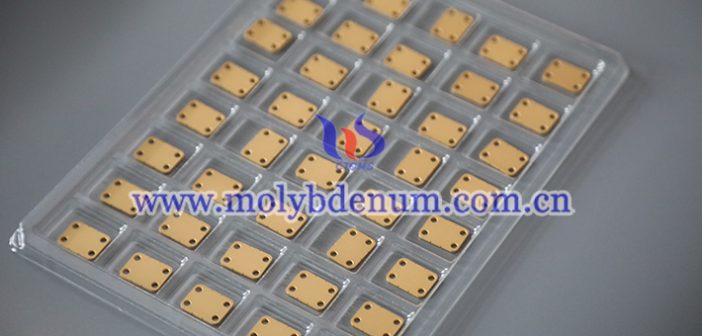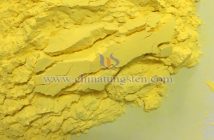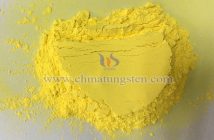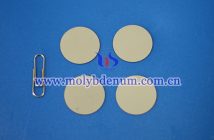Due to its high thermal conductivity, low thermal expansion coefficient and excellent high-temperature stability, molybdenum-copper alloy has a wide application prospect in the field of heat dissipation of high-power electronic devices. The heat dissipation performance of Mo-Cu alloys can be further improved by optimizing the Mo-Cu ratio, increasing the density of the material, adopting a gradient structure, optimizing the interface material, and developing new composite materials.
Molybdenum-copper alloy heat dissipation optimization strategy
1. Adjust the Mo-Cu ratio to improve the thermal conductivity
In practical applications, the appropriate Mo-Cu ratio should be selected according to the thermal conductivity requirements and matching requirements to find the best balance between heat dissipation and structural stability.
2. Improve the density of the material and reduce the thermal resistance
The Mo-Cu alloy fabricated by powder metallurgy may have small pores, which affects the heat dissipation efficiency. Optimized preparation processes increase material density, which reduces thermal resistance and increases thermal conductivity:
Hot Isostatic Pressing (HIP) technology: Through high-temperature and high-pressure sintering, the internal pores of the material are eliminated and the density and thermal conductivity are improved.
Liquid-phase sintering process: A small amount of liquid-phase copper is added during the sintering process to fully penetrate the Mo matrix, improve the interfacial bonding quality, and enhance the thermal conductivity.
Uniform particle size distribution: The use of nano-scale molybdenum powder and copper powder can reduce grain boundary scattering and improve the overall thermal conductivity.
3. Gradient Mo-Cu structure is adopted to improve heat dissipation and matching
Conventional homogeneous Mo-Cu alloys may have interfacial stress problems in high heat flux environment, resulting in deterioration of heat dissipation performance. The gradient Mo-Cu structure can optimize the thermal conduction path and improve the heat dissipation efficiency:
Bottom layer (close to the chip): High Mo content (e.g. Mo80Cu20) to ensure low CTE and improve mechanical strength.
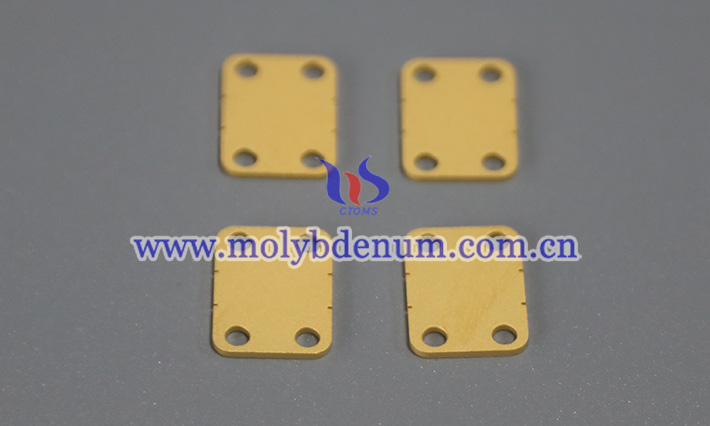
Surface layer (near the heat sink): High Cu content (e.g. Mo30Cu70) for enhanced thermal conductivity and improved thermal diffusion efficiency.
This gradient design can reduce interfacial thermal stress and improve the overall heat dissipation performance, making it more suitable for high-power semiconductor packages such as IGBTs and MOSFETs.
4. High thermal conductivity interface material is used to reduce the interface thermal resistance
Between the electronic package and the heat sink, the interfacial thermal resistance is a key factor affecting thermal management. Optimized interface materials can further improve heat dissipation capacity:
Coating of high thermal conductivity metal layer: Copper (Cu), silver (Ag) or gold (Au) are plated on the surface of Mo-Cu alloy to improve interfacial thermal conductivity and reduce contact thermal resistance.
Use of high thermal conductivity filler materials: Fill the interfacial gaps with silver glue, boron nitride (BN) or silicon carbide (SiC) to optimize heat transfer efficiency.
Optimize surface roughness: Reduce surface roughness, increase the interface contact area, and reduce the interface thermal resistance through precision machining.
5. Composite materials are used to improve the overall heat dissipation capacity
In order to further optimize the heat dissipation performance, the composite structure of Mo-Cu and other high thermal conductivity materials can be used, such as:
Mo-Cu/Diamond Composites: Diamond has a thermal conductivity of up to 2000 W/m·K, which can be combined with Mo-Cu to greatly improve thermal diffusion capacity, making it suitable for ultra-high power electronics.
Mo-Cu/Graphene Coating: Adding a high thermal conductivity graphene layer to the surface of Mo-Cu can effectively enhance thermal conductivity and improve heat dissipation efficiency.

